This “Limited Edition” Blu-ray from Radiance Films will be available to purchase on October 15th, 2025.
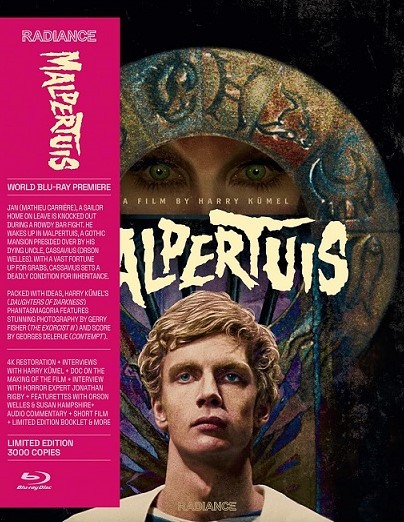
There are cult films known for their surreal and unique qualities, and there are cult titles in which the story behind the making of the picture is just as bizarre. Such is the case with the arthouse horror effort Malpertuis aka The Legend of Doom House, an international co-production from Belgium, France and West Germany and adaptation of a popular book by Jean Ray. It was helmed by Belgian rising star director Harry Kümel. And, the production boasted a relatively healthy budget (thanks to the involvement of United Artists) as well as a strong cast. This was a much buzzed about film when it premiered at Cannes.
But at the festival, the director revealed that there were behind-the-scenes issues and that he didn’t approve of the version being shown to audiences. He stated that an editor assigned to the production by United Artists had chopped it up, presenting the story in a flat and bland way. Not only that, but the filmmaker was, at the same time, working on his own cut of the movie for release in the Netherlands. His edition would correct what he considered were the numerous issues with the studio version.
So, the response to the film at Cannes was poor and it ended up being a big flop. By the time Kümel completed his proper version of the story and released it in the Netherlands six months later, the majority of movie fans had moved on. But over the years, the fan base of Malpertuis has grown and Kümel’s longer cut has turned into a genuine cult item.
Now, Radiance Films is, for the first time ever, presenting the movie as a “Limited Edition” Blu-ray. The disc contains the director’s 125-minute Flemish cut, as well as the 99-minute Cannes version (which appears on the disc as an extra). The elements have been given a 4K restoration for this presentation, which was supervised by Harry Kümel and the release contains a ton of bonus material that shed light on what happened during production, and the various obstacles the director faced. If you appreciate arthouse horror, then this is likely a disc you’ll want to pick up.
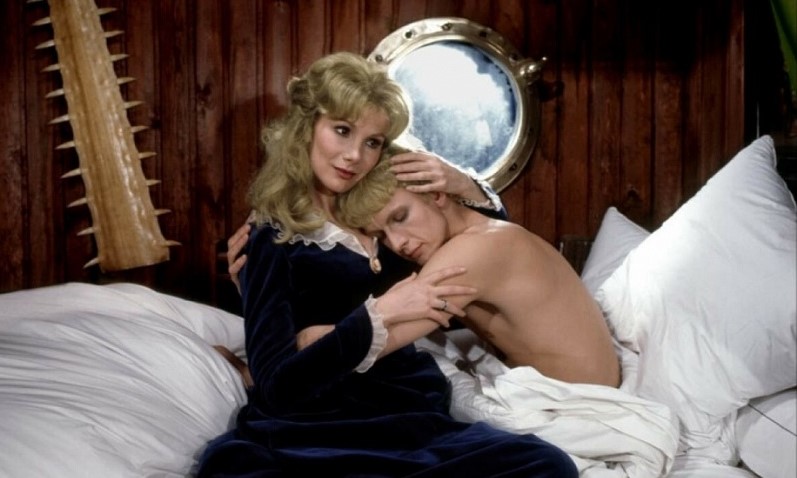
As mentioned, this is a surreal arthouse picture with horror elements, so it doesn’t function like a typical genre or even narrative film. The plot follows Jan (Mathieu Carrière) a sailor who returns to his hometown to find it, well, deserted. His childhood home has even been turned into a storefront. After being knocked unconscious in a bar, he is greeted by sister Nancy (Susan Hampshire). It looks like they’re in a ship’s cabin, but it is revealed that he has been taken to Malpertuis, the home of his uncle, Cassavius (Orson Welles).
Malpertuis is an isolated, dilapidated mansion where all the rooms are different and the estate is seemingly impossible to exit. Cassavius is about to die, and invites all his predatory relatives for a will reading. He explains that his massive fortune will be spread among the attendees, but only if they spend the rest of their lives at Malpertuis and never leave. The group are shocked and begin hatching plans to get out (and with the money), while Jan does his best to adapt to the odd situation. But there is so much weirdness occurring it becomes difficult for the lead to comprehend what is going on.
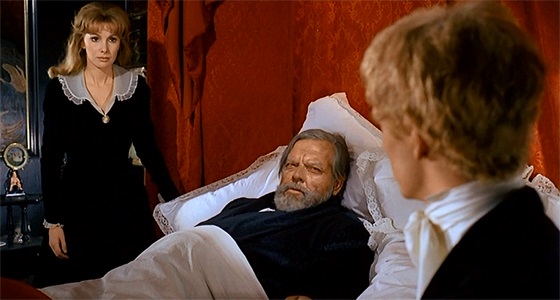
There is a clear beginning, middle and end to this story, but it contains a great deal of surreal and interpretive scenes. It is almost like watching an eerie dream unfold, with its lead character struggling to get a grip on his surroundings. And that reaction is completely understandable. Some of the curious individuals besides those introduced include two other females in the family who look exactly like the sister (they are also played by Susan Hampshire). There is also an odd relative who lives in the walls named Lampernisse (Jean-Pierre Cassel), a creepy taxidermist Philarette (Charles Janssens) who looks eager to make Jan into his next stuffed figure, as well as the stuffy, greedy, yet also philandering Dideloo (Michel Bouquet).
If the characters are strange, the environment is every bit as odd. This is a visually impressive movie, from the eerie and completely empty street exteriors (including an eerily foggy and unwelcoming garden), to long hallways lit by flames, a stairwell reminiscent of an eyeball, and a variety of large rooms with completely different styles and looks. One even has light that is cast from sources in a room actually painted on its walls. It all feels unwelcome and like something right out of a nightmare. If you let yourself view it like you’re seeing someone’s unsettling dream and just watch the individual try to find his way out, it’s an engaging and impressive experience. The images are striking and, as abnormal as it all is, I found the reveal effective and satisfying.
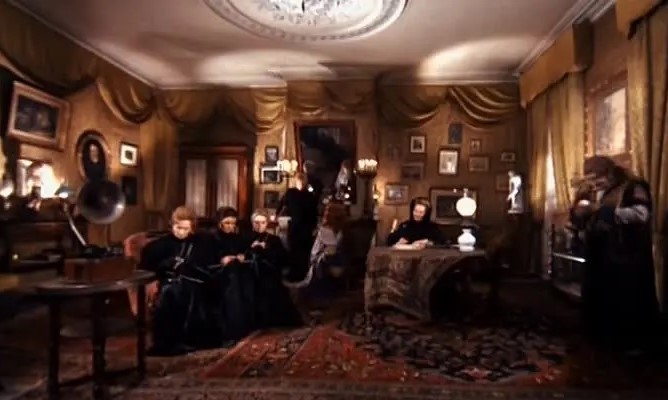
Another thing to note is that the longer version is, by far, the better one. It allows more time to get into the rhythm of the film and explains more about the characters that pays off at the end. The shorter edition does feel quicker and choppier, losing a lot of the atmosphere, and somehow leaving viewers even more baffled by the events occurring. Even some of the effects shots are different, more elaborate and memorable in the long cut.
The image quality on display isn’t reference material, but it is a big step up from earlier editions. This film has a layer of grain and isn’t always perfectly sharp, but is consistent and keeping with the way the picture was lensed. The new restoration does make the colors and sets bolder and clearer, allowing for the eye to see far more of the incredible details in the rooms, including props and costumes. It’s likely as good as this film will ever look.
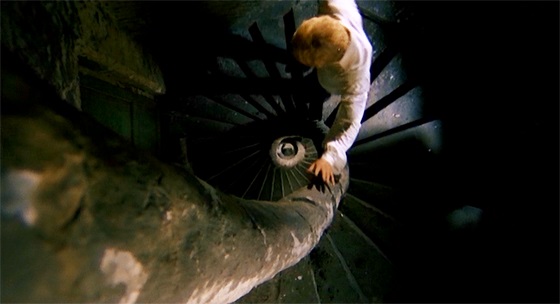
And there are far more extras on the disc than I was expecting. The first is a director commentary with Kümel, along with Françoise Levie, who was on set as an assistant during the production (her father was also one of the producers). The pair go over all of their memories of shooting the film. One of the director’s most asked questions was about working with Welles. Kümel makes it clear that while he liked Orson “as a person”, the performer was very difficult on-set. He noted the actor’s insecurities when others in the same scenes were doing good work. Welles would frequently insist on close-ups of himself when they weren’t necessary, driving accomplished director of photography Gerry Fisher (Hamlet, Ned Kelly, Man in the Wilderness, Juggernaut, Wolfen, Highlander, Black Rainbow, Exorcist III) up the wall. These are very amusing stories.
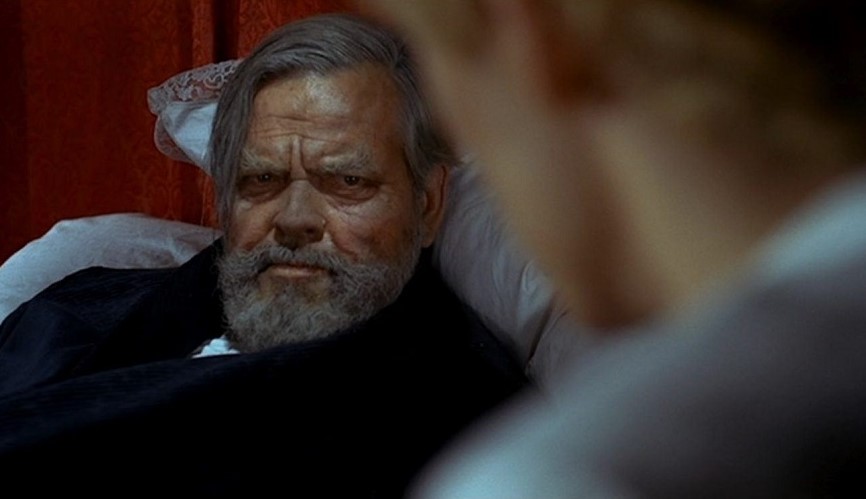
Kümel also honestly talks about what occurred behind the scenes. United Artists assigned an editor to the picture while shooting, and after a few days, Kümel realized that the new employee wasn’t working. He admits the editor was talented, but became upset that the crew member was transforming his surrealist effort into a straightforward genre picture. His producers wouldn’t listen, until late in the production when Kümel cut some of the film together himself. They agreed they had made a mistake, that his cut was better, and agreed to pay him to create his own Flemish version for release in the Netherlands. The director also talks about the unfortunate premiere at Cannes.
Kümel also states how impressed he was by Susan Hampshire and her work taking on three parts in the film, mentioning that he also took a meeting with Catherine Deneuve for the role early on. Ultimately, he was glad that it ended up being Hampshire. The director even discusses elements of the film that he isn’t crazy about, believing that he miscast one of the characters in the film.
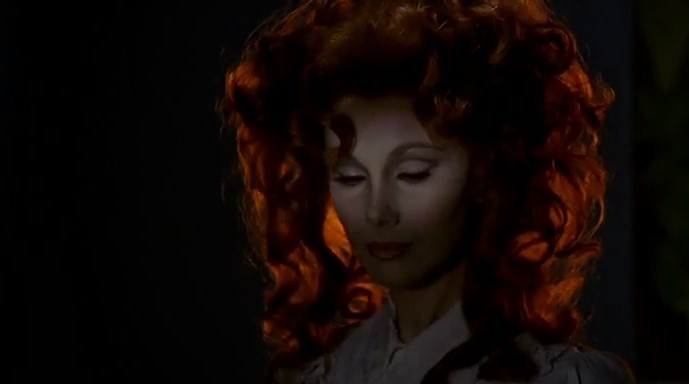
There is also an interview with Kümel that goes into many of these aspects of the film and more, including additional and fascinating tales about his involvement in the production.
You’ll also get a great 2005 documentary on the film that details Kümel’s career leading up to this production. It features interview footage with star Mathieu Carrière and his unusual appearance in the picture. The actor notes that he didn’t even recognize himself while shooting his part. The doc is strangely dismissive of Kümel’s previous hit, Daughters of Darkness (which will soon be receiving a release from Radiance Films as well), but it does acknowledge the movie’s effectiveness. The earlier film was intended as a homage and satire of European horror movies. Apparently, there was a lot of heat and interest around Kümel at the time, and many performers wanted to work with him, even though they weren’t entirely certain if the hit film was an intentional riff on genre cliches.
And there is a nifty featurette on the casting of Welles and how he became involved in the project. International productions often attempt to cast a known American in their movies to secure interest and a release in that part of the world. While the producers initially thought that even asking Welles was absurd, the actor immediately agreed to their offer (he just ended up being very difficult when he arrived on shooting days). This extra includes rare outtakes of Welles from the shoot.
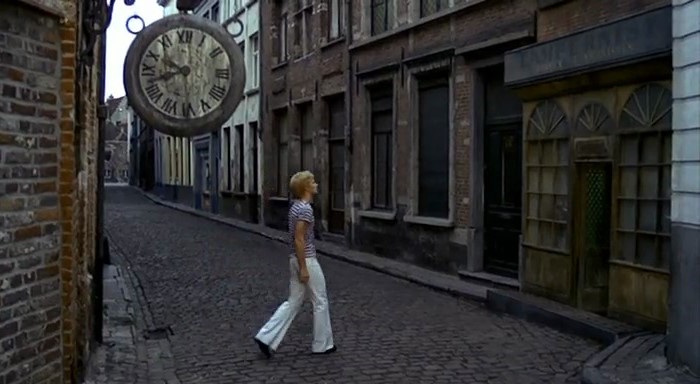
Additionally, you’ll get a special featurette on Susan Hampshire. Also made in 2005, it includes an interview, screen tests and contributions from cast and crew on the talented performer.
If that wasn’t enough, an archival interview from 1971 Belgian television is included. Co-star Michel Bouquet and Harry Kümel talk about Malpertuis and the issues with the version shown at Cannes. Bouquet is incredibly supportive of his director, stating that his cut is vastly superior.
And there’s more. An archival interview with Jean Ray aka Jean Flanders is included. He was the author of the novel and talks about his experiences working with Kümel on this film andhow they came to know each other. In another brief bonus, Kümel visits some of the exterior locations used in the movie (the film was shot in Gent and Bruges, Belgium).
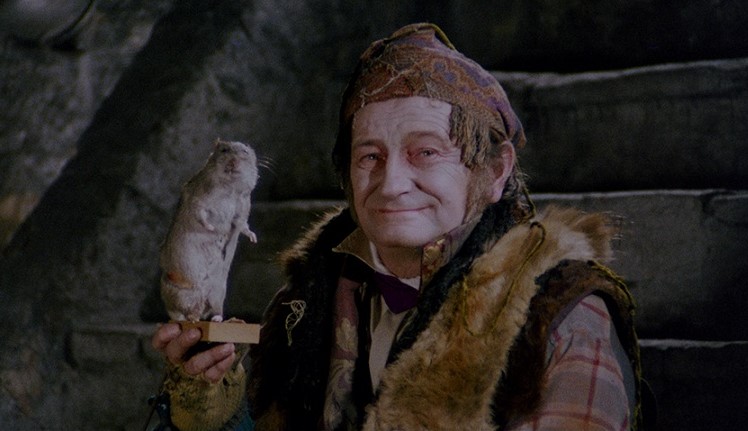
A well-regarded, black and white 37-minute short from Kümel is also included on the disc. It’s an adaptation of a Franz Kafka play called The Warden of the Tomb and is very impressive in its own right. A trailer for Malpertuis is also included on the disc.
It all comes with an 80-page booklet featuring writing on the movie from multiple film experts, and a reversible sleeve featuring original and newly commissioned art for the film.
Naturally, this is an incredible package of an important and noteworthy (as well as hard-to-find) feature film. Malpertuis isn’t necessarily for slasher fans, but it is a well-mounted and creepy picture with haunting imagery that stays with you long after the credits roll. This amazing “Limited Edition” Blu-ray boasts an image upgrade over previous editions, and comes with hours of bonus features that help one understand not only the film, but what a challenging task it was to put it all together. This is yet another phenomenal release from Radiance Films.


